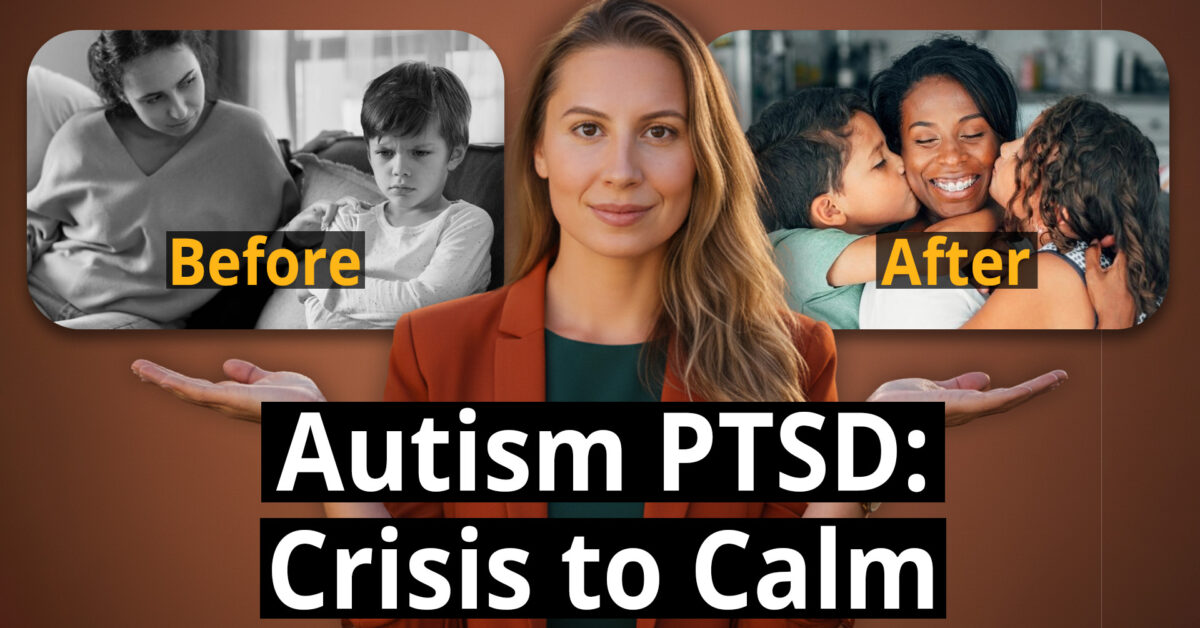From a broad perspective, Down Syndrome and Autism may seem to be very similar, but there are major differences. If you are confused and want some detailed answers, read along as I chart out a clear Autism Vs Down Syndrome comparison. I explain in great detail all the important information as we discuss the similarities, differences, causes, and much more about both autism and Down syndrome.
Autism Vs Down Syndrome: Similarities and Differences
| Criteria | Autism | Down Syndrome |
| Diagnosis | Based on behavior observations | Done using lab tests |
| Diagnosis at age | 18 months is the earliest a reliable autism diagnosis can be made. The average age of diagnosis is 5 years old. | Can be diagnosed even before the birth of the child |
| Cause | Still unknown. There are multiple possible factors, but research is still inconclusive. | This occurs due to the presence of an extra chromosome. |
| Appearance | Not a reliable approach | Physically visible changes such as a smaller size head, flatter facial features, shorter neck length. |
| Type of condition | Neurological condition | Genetic Condition |
| Prevalence | Much higher than Down Syndrome. One out of 44 children in US are diagnosed with ASD | One out of 772 births in US are with Down Syndrome |
| Also known as | ASD | Trisomy 21 |
To download the comparison table click here
What Is Autism Spectrum Disorder?
Understanding autism is vital. Autism occurs in 1 out of 44 children in the US. Core deficits in autism are identified in two domains.
The first is social communication interaction. What does that mean? It means abnormalities in understanding the intent of others. Diminished interactive eye contact and atypical use and understanding of gestures as well as pretend play. Symptoms of autism are further shaped by deficits in imitation and processing information across sensory modalities such as vision and also hearing.
The second is restrictive, repetitive patterns of behavior. Repetitive behaviors can be primary compulsions, but may also be related to problems in sensory processing. And it also could reflect a desire to instill predictability when an individual doesn’t understand the intent of others. Many times when this is done, it’s to calm down and gets labeled as self-stimulatory behavior.
Autism is diagnosed through observation. There’s no genetic test or any lab test that can be done to diagnose autism. There is debate as to how genetics is involved in autism. To date, there is not one specific autism gene.
Autistic people may show restricted interests and repetitive behaviors and these restricted interests or repetitive behaviors can sometimes be challenging for the parents and limiting the person from accessing education, employment, and participating in life in certain ways.
There are many adults who receive an autism diagnosis later in adult life meaning a person with autism can have a meaningful life.
What Is Down syndrome?
Down syndrome is a genetic condition in which a person has an extra chromosome, specifically on Chromosome-21. It is also called Trisomy 21 because of that extra, third chromosome. This condition causes a distinct facial appearance, potential intellectual disability, developmental delays and may be associated with thyroid or heart disease or other health problems as well. Since Down syndrome is genetic, a test can be done on the fetus when the mom is in the second trimester.
The similarities between autism and Down syndrome are potential intellectual disabilities, developmental delays, speech delays, and also other co-occurring health conditions. A large difference between autism and Down syndrome is the way a diagnosis is made. For autism, there’s no lab test, whereas, for Down syndrome, a genetic test can be done even while the mom is still pregnant.
Causes of Autism and Down syndrome
The mutation of the 21st chromosome causes Down Syndrome and it is the way the mutation has taken place that decides the type of Down Syndrome. Mosaicism is a type of DS that occurs when there is an extra copy of the 21st chromosome, but this is in some cells but not all.
Translocation is the third type of Down Syndrome in which there is only an extra part of the 21st chromosome and not the complete copy.
This is a genetic disorder and it is possible to detect it even before the birth of the child. Since the condition is caused due to an issue in the genes, it is referred to as a genetic disorder.
In this medical condition, the physical features of the affected child show visible changes. If not detected earlier, usually it is due to these facial changes that the parents get their infants tested. These may include slanted eyes, a shorter neck, a smaller head, smaller ears, flat facial features, etc., – basically some sort of distinctly visible physical presentation.
The cause of autism is still unknown. There are multiple possible factors, but research is still inconclusive.

Is Autism the same as Down Syndrome?
No, both the conditions are not the same, they may seem very similar though. But if you look closely, you will find that there are significant differences between them. Here are the similarities.
Similarities between Down Syndrome and Autism:
- Both autism and Down syndrome impact a person’s development.
- They affect how children develop physically, mentally, socially, emotionally, and behaviorally.
- Children with either disorder often experience delays in language development, social skills, motor coordination, and cognitive abilities.
- People with both conditions have similar challenges such as speech impairments, difficulty communicating, learning disabilities, and behavioral issues.
- People with both conditions require love, support, and structure.
- A child with autism or Down syndrome may require help with daily activities such as eating, sleeping, dressing, and bathing.
A large difference between autism and Down syndrome is how a diagnosis is made. For autism, there’s no lab test, whereas, for Down syndrome, a test can be done even while the mom is still pregnant.
Autism can co-occur in someone who has Down syndrome. In fact, many studies show that there is a high prevalence of autism in those with Down syndrome. And this is new research. This is a new area that’s starting to be studied more.
Research has shown significant associations between plasma metabolites and neurodevelopmental outcomes. Despite the varied origins of developmental disabilities, researchers found similar changes in the metabolism pathway among those with Down syndrome and those with autism.
Mitochondrial dysfunction is also present in many with autism, as well as those with Down syndrome. So there is a similarity and that’s being researched more and more.
Researchers know there is some type of link, but they haven’t quite figured it out yet. And those are the similarities and differences between autism and Down syndrome.
Is it Autism or Down Syndrome?
If you are concerned about your child, please work with a knowledgeable healthcare provider.
Testing for Down Syndrome
According to the American College of Obstetrics and Gynecology(ACOG), all pregnant women should be offered the option of having a screening or diagnostic test done during their pregnancy.
- A screening test can help determine whether a pregnant woman has an increased chance of having a child with Down syndrome. However, these tests cannot determine definitely if the baby has Down syndrome or not.
- The first trimester combined test includes a Blood test and then the Nuchal translucency test.
- The integrated screening test is a combination of the above and then a second test is done in the second trimester to measure the blood levels of alpha-fetoprotein, estriol, HCG, and inhibin A.
Depending on your screening results, if they are positive or negative for Down’s syndrome, then you may want to take further tests to confirm the diagnosis.
- Diagnostic tests on the other hand can concretely identify if your baby has Down syndrome or not.
- Chorionic villus sampling (CVS)
- Amniocentesis
These are the two diagnostic tests that can confirm if your baby has Down’s Syndrome or not.
After birth: Diagnosis of a newborn with Down Syndrome is done based on the appearance of the baby. But since this can sometimes lead to false positives, you may even be prescribed a diagnostic test called chromosomal karyotype to confirm the diagnosis.
It is important that your child be under the care of a qualified healthcare practitioner. If your child has a Down syndrome diagnosis there are doctors that specialize in monitoring health and looking out for specific co-morbidities.
Testing for Autism
Autism is diagnosed through observation. There’s no genetic test or any lab test that can be done to diagnose autism. There is debate as to how genetics is involved in autism. To date, there is not one specific autism gene.
I have a detailed article that covers all about autism diagnosis here. You can check it out.
Functional medicine is the best way to treat your child’s health issues. If you’d like to work with a great functional medicine doctor that has a focus on autism, I’ve composed a list of good doctors, you can check out my book, The Lyons Report, Autism and Functional Medicine Doctors.

Dual Diagnosis: Can one have BOTH – Autism and Down Syndrome?
Yes, it is possible. Studies vary the estimates, but roughly between 18% to 20% of children with Down syndrome are also diagnosed to have autism spectrum disorder.
Autism can co-occur in someone who has Down syndrome. In fact, many studies show that there is a high prevalence of autism in those with Down syndrome. And this is new research. This is a new area that’s starting to be studied more.
If your child does have both autism and Down syndrome, please work with a knowledgeable team. Speech therapists will be vital for a child that has a dual diagnosis. Many speech and language pathologists (SLPs) receive additional training specifically to better meet the needs of a child with both autism and Down syndrome.
Recent research shows estimates of ASD phenomenology were established for:
- Rett’s syndrome (female individuals only 61%)
- Cohen’s syndrome (54%)
- Cornelia de Lange syndrome (43%)
- tuberous sclerosis complex (36%)
- Angelman’s syndrome (34%)
- CHARGE syndrome (30%)
- fragile X syndrome (male individuals only 30%; mixed sex 22%)
- neurofibromatosis type 1 (18%)
- Down’s syndrome (16%)
- Noonan’s syndrome (15%)
- Williams’ syndrome (12%)
- 22q11.2 deletion syndrome (11%).
Found the information helpful? Consider getting my free guide below to help you in your autism journey.




